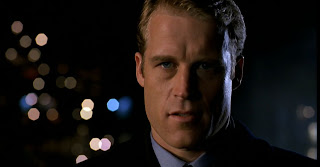We’ve had a lot of snow around here. A lot. Basically just a typical Chicago blizzard but the last few winters have been pretty mild so a blizzard like this feels extra intense.
Anyway, most of the streets have been cleared and many sidewalks are clear but there are still giant piles of snow everywhere and getting from one cleared area to the next sometimes is a little difficult.
Yesterday afternoon before the Super Bowl started I was walking home from a store and I was walking in the street because some sidewalks are clear and some are not so, generally, it’s easier just to walk in the street.
As I approached an apartment building, a woman got out of a parked car. She was wearing some kind of short, fluffy fur jacket over a mini-skirt and high heels. Like three-inch heels. She walked—slowly, looking very sexy—across the street then stopped in front of the mound of snow between the street and the sidewalk. She just stood there.
Some guy—I guess either her boyfriend or her sassy gay friend—opened the door of the apartment building and yelled, “Come on, what are you waiting for?”
Obviously she was trying to figure out if there was a gap in the snow mound or a particularly hard area she could step on.
I thought, “This guy isn’t going to come out and help her. Should I go over there and help her over the snow?”
As I was wondering if I should help her, she looked up at the guy holding the door and she yelled, “I’m wearing fucking heels here, asshole, give me a fucking second!”
So I thought, “No, I’m not going to go help her. Her boyfriend or her gay friend can deal with that.”
I just walked past.
When a woman wears high heels, she looks cool. It’s the whole Sweet Polly Purebred look and everyone loves it.
But high heels only work on a woman’s butt. Somebody needs to invent something that will make a woman’s brain as attractive as her ass.






























